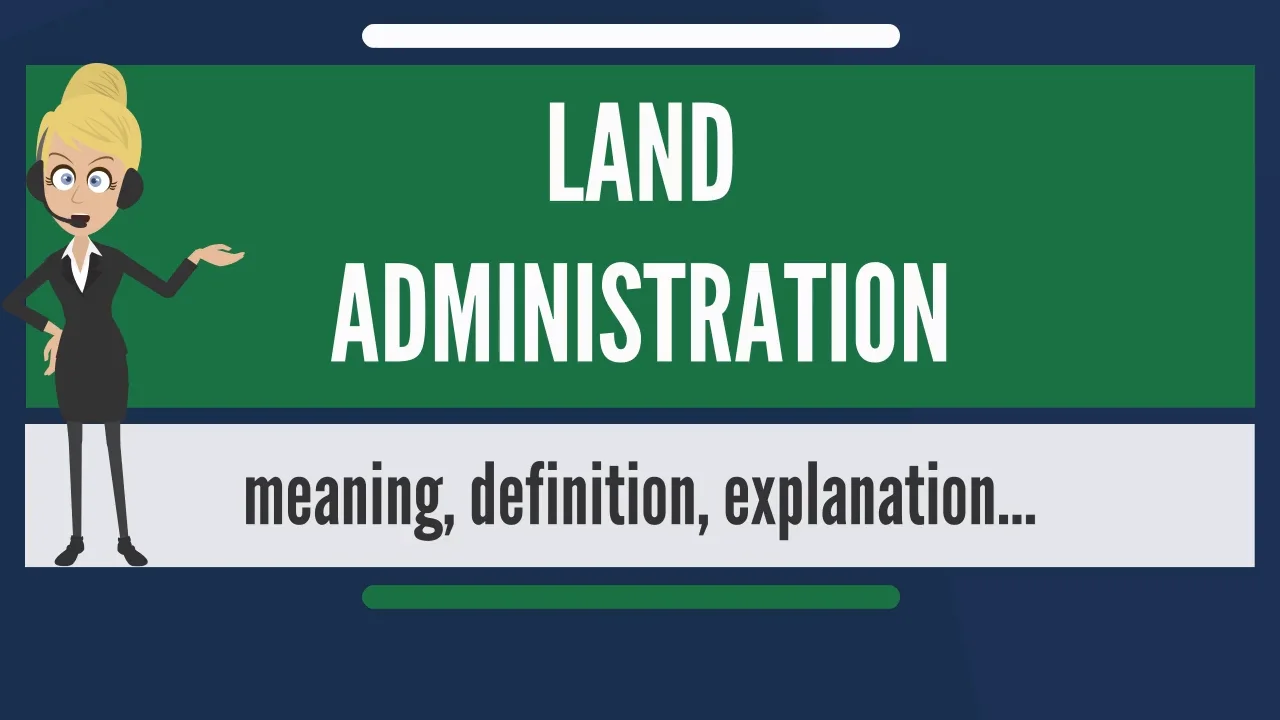✪✪✪✪✪
http://www.theaudiopedia.com ✪✪✪✪✪
What does LAND ADMINISTRATION mean? LAND ADMINISTRATION meaning - LAND ADMINISTRATION definition - LAND ADMINISTRATION explanation. What is the meaning of LAND ADMINISTRATION? What is the definition of LAND ADMINISTRATION? What does LAND ADMINISTRATION stand for? What is LAND ADMINISTRATION meaning? What is LAND ADMINISTRATION definition?
Source: Wikipedia.org article, adapted under
https://creativecommons.org/licenses/by-sa/3.0/ license.
Land administration is the way in which the rules of land tenure are applied and made operational. Land administration, whether formal or informal, comprises an extensive range of systems and processes to administer. The processes of land administration include the transfer of rights in land from one party to another through sale, lease, loan, gift and inheritance; the regulating of land and property development; the use and conservation of the land; the gathering of revenues from the land through sales, leasing, and taxation; and the resolving of conflicts concerning the ownership and the use of land. Land administration functions may be divided into four components: Juridical, regulatory, fiscal, and information management. These functions of land administration may be organized in terms of agencies responsible for surveying and mapping, land registration, and land valuation. The purpose and scope of this knowledge domain appear from the following introducing notes:
These Guidelines define land administration as the process whereby land and the information about land may be effectively managed. They are mainly written for senior governmental staff and politicians engaged in land administration issues. The aim is to outline the benefit of having a relevant and reliable land information system in place. The Guidelines identify the factors that should be taken into account in developing the legislation, organization, databases and maps, as well as the funding mechanisms, required to implement and maintain a solid land administration system.
An early example of use of the notion of land administration is a 1973 Seminar on Land Administration in Kuala Lumpur, Malaysia. Land administration arrangements were charted in a 1985 paper by Holstein, McLaughlin, and Nichols, and the Department of Lands and Surveys, Western Australia changed name in 1986 to Department of Land Administration. The UNECE in 1996 published Land Administration Guidelines With Special Reference to Countries in Transition, and the Dale & McLaughlin textbook on Land Information Management from 1988 was in 1999 succeeded by the textbook Land Administration.
The practise of land administration is older than the presently used term. In The Cadastral Map in the Service of the State, mention is made of cadastral survey and subsequent tax collection in northern part of the Netherlands, initiated by an order in 1533. Other early, seventeenth century mapping for administrative purposes are found, e.g. in Sweden and in German principalities. In the duchy of Austrian Lombardy, a complete cadastral survey, the Milan cadaster, was finally adopted as a taxation base in 1760, and this provided the model for continental European countries to follow. Largely independent from this cadastral development, local courts recorded deeds of conveyance. In the context of codification of national legislation, most European countries in the nineteenth century established a title system at the local courts. England and Wales departed from this trend, as prolonged debates during the nineteenth century left parties with optional public recording of deeds of conveyance and the locating of properties and their boundaries on large-scale topographic maps, where available, similar to the metes and bounds method. However, most of British India was covered, during the nineteenth century, by the Revenue Survey.
In the colony (now state) of South Australia, Robert Torrens in 1858 introduced a title system. Like the Milan cadastre, this system became a model to be followed, initially within the Commonwealth. In the USA, the Land Ordinance of 1785 established the basis for the Public Land Survey System, which provides locational functions as the cadastral or - in modern terms - land information system described above. For the present adoption of the Torrens system in the USA, see Justin T. Holl, Jr. et al. (2007).
